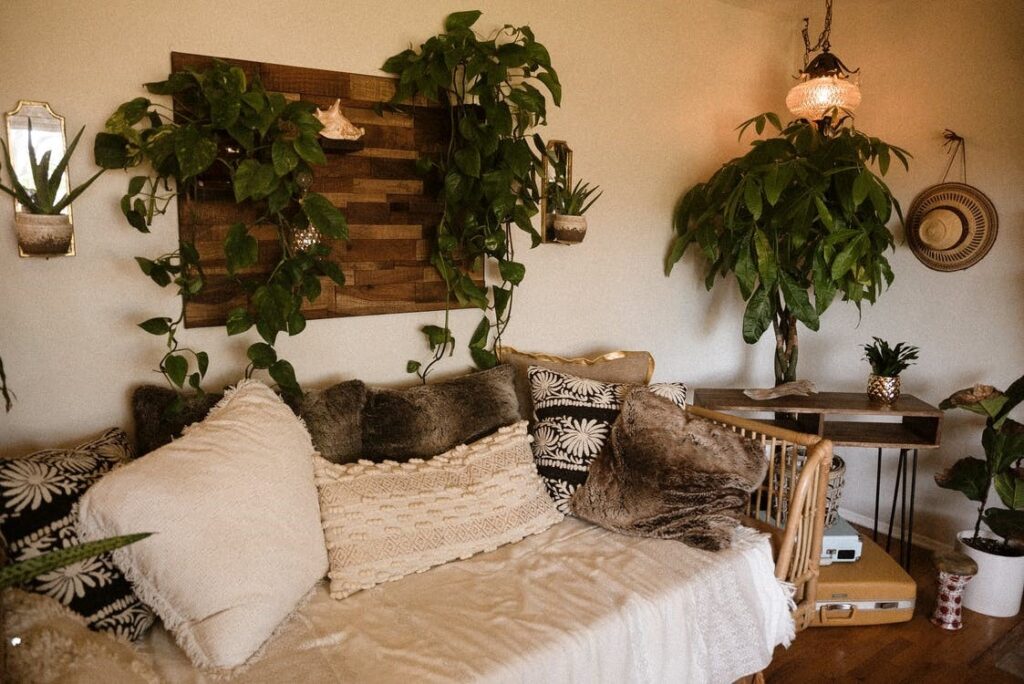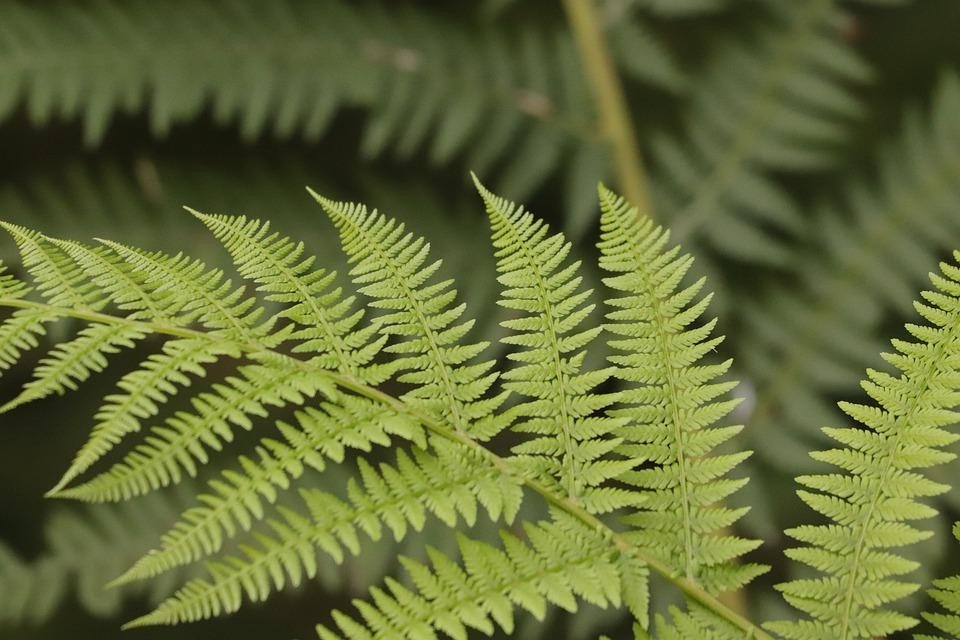Plants are one of the most overlooked elements of a good design. Indoor plants come with a lot of benefits. Plants provide colour, organic shapes, and unique texture to a space. They can be placed in the empty corners, bookshelves, dining table, coffee table, bedroom, kitchen, and even in the bathroom.
Not only do they add to the living space’s aesthetic appeal, but they also have many health benefits. They help in purifying the indoor air by absorbing harmful pollutants, freshening the air, and helping you stay focused and positive. Thus, they complete the interior of every space in a vibrant, lovely manner.
So, when plants have so many benefits, why are many people apprehensive about adding greenery to their décor?
The biggest reason – fear!
Yes, many people believe they do not have green fingers, and might not be in a position to take care of plants.
Here, we list a few simple tips on how to choose a plant for your home or office, and how to take care of them.

Image – Wendy Wei/ Pexels
- Know the room well
Before investing in plants, it is important to study the room in detail. Understand the area, the style theme, how much space is available, and what kind of lighting is available. These factors would play an important role in the type, placement, and upkeep of the plants.
- Size matters
The size of the plant depends on the size of the room, and available space. Large-sized plants work well as a statement piece in larger spaces, with sparse designs.
- Maintenance levels
Plants require various kinds and levels of maintenance. You should choose a plant based on your expertise and comfort. Also, it is important to understand the plant’s water, soil, and sun requirements.
- Space management
Plants are a good aesthetic addition in the areas where there isn’t sufficient space to place bulky furniture. It’s a good way of filling any visual void, as long as you don’t go overboard. The plants shouldn’t be fighting for attention – either with each other or with other display artifacts. You don’t want the living room to resemble a nursery, right!
These are a few of the most commonly used indoor plants
- Snake Plant

Image – Fabian Stroobants/ Pexels
Also known as mother-in-law’s tongue, Snake Plants are one of the most popular and common indoor plants. These succulents are easy to maintain, sturdy, and absorb harmful toxins like benzene and formaldehyde from the air.
They grow best under indirect sunlight and should be watered only when the topsoil is dry.
- ZZ Plant

Image – Lokesh Tiwari/ Pexels
ZZ Plant is another popular plant on account of its indestructible qualities. It is low on maintenance as it thrives well in both bright and low light. It’s a natural alternative to air purifiers and looks beautiful with its thick shining leaves.
It requires water once a month, or even lesser, and can wilt with overwatering.
- Fiddle-Leaf Fig Tree

Image – Lachlan Ross/ Pexels
This elegant plant with broad, leathery leaves is evergreen and sturdy making it a popular choice as an indoor plant.
It grows best in a sunny spot and requires water once a week or more if the conditions are dry.
- Palm

Image – Artem Beliaikin/ Pexels
Palm is a generic name for a family of plants that comes in many shapes and sizes. These plants have lush green fronds that spring to great heights and cover the ground beneath.
These plants require more space as they grow both in terms of height and breadth. Weekly watering and medium sunlight keep these plants happy.
- Peace Lily

Image – Lucas George Wendt
Peace Lily is a low-maintenance plant popular amongst those who tend to overwater their plants. Its glossy green leaves and white flowers add a quaint charm to the room.
It grows best in warm, humid conditions under bright light.
- Fern

Image – mari_di_ann/ Pixabay
Ferns are wonderful low-maintenance house plants. They add colour and brightness to a space and don’t require much in return. They love moisture and thrive under humid conditions, thus making them good fits even in kitchens or bathrooms.
Their light requirement is not much. They are also effective at removing indoor pollutants like formaldehyde etc, making them an important house plant.
- Aloe Vera

Image – Cecília O. Tommasini/ Pexels
Aloe Vera is a succulent and versatile plant. Being low on maintenance makes them the perfect house plant. With proper care, these plants live for even a decade.
Since it is a desert plant, it requires plenty of bright, indirect sunlight, and very little water. It needs to be watered once in two or three weeks.
- Golden Pothos

Image – Kulbir/ Pexels
Golden Pothos is a unique plant with variegated leaves. It is popular as an indoor plant because it requires practically zero maintenance. It needs very little water and can survive even in dark corners. It is one of the best household plants for removing toxins like benzene, formaldehyde, toluene, and xylene.
At the same time, if ingested, they are toxic to pets and children.
- Tillandsia

Image – cristty/ Pexels
Also known as Air Plants, this group of indoor plants need no soil for survival, and very little air, water, and light.
They are a perfect fit in the bedrooms as they photosynthesize at night.
- Chinese Evergreen

Image – PENEBAR/ Pexels
Chinese Evergreen is a plant native to Asia. It is easy to maintain and grows well in low light. Available in a variety of colours, and variegated patterns, these plants are suitable even for beginners.
According to NASA, it is a top plant for purifying the air. But it is harmful to dogs, cats, and even humans if ingested.
Indoor plants are a great way of adding to a room’s décor without much fuss and cost. One can choose different kinds of planters based on the type of plant and the theme of the room.
And finally, if you feel natural plants are really not up to your alley, you can even go with faux plants. Even if you don’t get the natural benefits, you would still be able to add colour to your living space.
